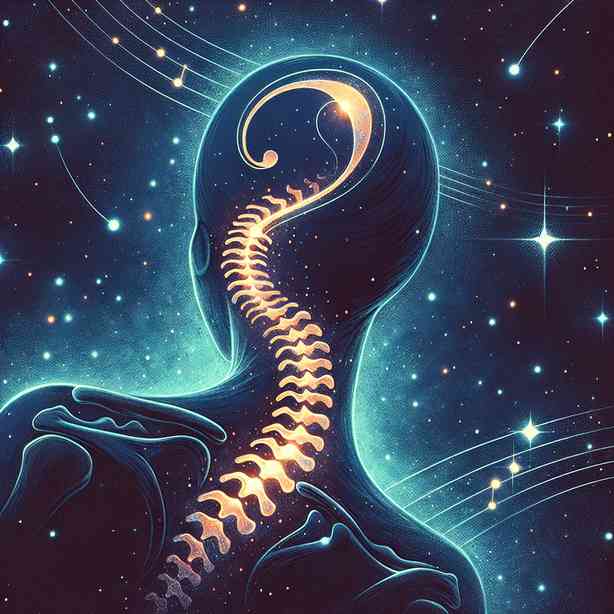
Music has an unparalleled power to evoke emotions, memories, and sensations. Among the myriad of genres and styles, there are certain songs that transcend ordinary listening experiences, striking a chord deep within us, making our spines react. These tracks resonate with listeners on a profound level, often transporting them to different times and places or stirring feelings they thought long buried. The phenomenon of a song that makes your spine react isn’t just about personal favorites; it’s deeply rooted in the science of music, psychology, and human connection.
To understand why specific songs have such a visceral impact, we can delve into the science of music. The human brain is wired for music. When we listen to a song, several areas of our brain light up, including those responsible for emotion, memory, and pleasure. This intricate interplay can produce physical reactions such as chills, goosebumps, or even emotional tears. The release of dopamine, a neurotransmitter linked to pleasure and reward, plays a significant role here. Whenever a musical piece triggers an emotional response, the body responds with pleasurable sensations — this is often the spine-tingling experience many refer to.
Many of us have experienced a moment when our favorite song comes on, moments we realize are embedded in our memories. Perhaps it’s a song you danced to at a particular event, one that holds the laughter of friends or the joy of a first love. These memories become intertwined with the music itself, enhancing its power to evoke feelings. The notion of “musical nostalgia” can amplify our reactions to songs, taking us back in time and reminding us of who we were in those moments, ultimately creating a spine-tingling connection.
Moreover, certain elements within a song contribute to its ability to produce physical reactions. Consider the role of dynamics, tempo, and harmony. Songs that build tension, introduce unexpected notes, or switch tempos can create a sense of anticipation or excitement. For instance, a sweeping orchestral buildup that culminates in a powerful crescendo often results in that spine-tingling sensation. This use of dynamics – the contrast between soft and loud – has been effectively employed across various music genres, creating a compelling emotional journey for the listener.
Additionally, lyrics play a crucial part in eliciting emotional responses. Words can evoke strong feelings, telling relatable stories that resonate with personal experiences. Songs addressing love and heartbreak, social issues, or profound life moments often hit us harder when the lyrics align with our own life experiences. The narrative component of a song can create a deep personal connection, enriching the listening experience and leading to that spine-tingling reaction.
Cultural context also significantly impacts how we perceive music and its emotional responses. Genres steeped in cultural significance might evoke specific feelings tied to collective memories or social movements. For example, protest songs or anthems from a particular era often carry weighty emotional responses; they become symbols of change and unity, allowing individuals to connect over shared experiences. The cultural background and collective memory enhance the emotional resonance, allowing the song to reach directly to our hearts and spines.
An overarchingly significant aspect of songs that connect with us viscerally is their ability to invoke empathy. Music often tells stories or conveys emotions, drawing listeners into a shared human experience. Artists often tap into their vulnerabilities, sharing tales of loss, triumph, love, or heartache. This openness fosters an emotional connection, allowing us to feel and empathize with their journey. When we empathize or relate to the singer’s story, it reveals a deeper truth about our own human experiences, making the song resonate even more profoundly within us.
Many artists recognize their songs have the power to create emotional reactions, leading to intentional songwriting techniques that aim for this very effect. They might utilize specific chord progressions known to elicit emotional responses, or they could craft melodies that evoke a sense of longing or nostalgia. The mastering of these elements becomes an art form in itself, as musicians strive to create timeless pieces of music that will continue to connect deeply with their audience across generations.
It’s not just individuals but entire communities that experience these spine-tingling moments collectively. Concerts, festivals, and live performances amplify this connection, as the shared experience of music creates an electric atmosphere. Being part of a crowd, united in song, can heighten collective emotions, leading to incredible moments of catharsis. The synergy between the audience and the artist can create an environment ripe for emotional release, underscoring our innate desire for connection.
Moreover, the impact of visual elements, like music videos and live performances, should not be overlooked. Visual storytelling complements the auditory experience, often enhancing the emotional depth of a song. The imagery portrayed can evoke further emotions, creating a multi-sensory experience that complements the sound. This synergy between visual and auditory elements can elevate a song from just an auditory experience to something deeply immersive.
In the end, the notion of “that song that makes your spine react” encapsulates a rich tapestry of elements that intersect with our emotional landscapes. It is a confluence of scientific, psychological, and cultural factors that create a uniquely personal yet deeply shared experience. Each spine-tingling moment serves as a reminder of our humanity — the capacity for connection, longing, joy, and catharsis.
As you reflect on your favorite songs, consider what it is about them that stirs such powerful reactions. Is it the memory they invoke? The resonance of lyrics? The intricate build of melodies and harmonies? Whatever it may be, these experiences highlight the remarkable power of music in our lives. So the next time a song sends chills down your spine, don’t overlook this powerful connection. Embrace it. Celebrate it. After all, these moments are not just fleeting sensations; they are a testament to our shared experiences and the universal language of music, binding us together in profound and beautiful ways.


